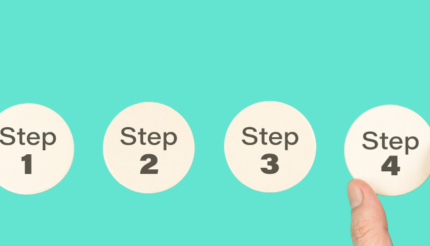So, how do you consolidate the money side of your business?
Accounting is often referred to as the language of business. When you become great at mastering money, you build a solid foundation for business growth.
Money Basics: Recording and Reporting
To build and consolidate the money side of your business, you must start analysing your numbers. The two essential things you want to look at are:
- break-even point
- profit break-even point
1. How much do you need to make to cover your costs?
Add up all the fixed business costs, e.g.,
- Rent
- Leases
- Wages
- Bills
Then calculate the variable costs, which are the costs you have for making your product or service and delivering it to your customers.
For example, if your fixed and variable costs mount up to £10,000 and you make 50p per item, you need to sell 20,000 to break-even.
2. How much do you need to be profit break-even?
You need to know how much money is required to cover your costs and make a profit that motivates you. So, you should also consider the profit you want to make.
For example, if your fixed and variable costs are £10,000, and you’d like to make £2500 profit, you need to sell 25,000 items at 50p profit each.
3. How to Keep Records
You need to record five major elements:
- Sales Costs. Everything you spend to close a sale needs to be tracked so that you can have a full picture of your fixed and variable costs.
- If you know how much your assets are worth and what revenue they bring, you can make better management decisions around cash flow.
- Your employees are your most valuable asset, so you want to have an understanding of their working hours.
- Bank accounts. Ideally, you want to have three bank accounts: one for trading and business operations, one for taxes, and one for profit.
- The work that gets done. You should also keep a record of your wins for accountability and to gain a better understanding of internal processes.
Depending on your industry and the type of business you run, you might have other sections that need recording. However, as a general rule, you should have complete control over these five business areas. Use cash flow statements, profit & loss, balance sheet, budget, percentage-based analysis (year on year, month on month) to keep track of each element.
And of course, some business areas require more accuracy in recording than others. It’s in your best interest to outsource part of this activity to a bookkeeper, who can help you manage cashflows, set a budget, and record the day-to-day financial transactions to help you consolidate the money side of your business.
Strategies for Making Money
Now you know where to find your numbers, I’ll show you how to use them to calculate how much money you need to earn.
1. Pricing
If your strategy is to gain customers by keeping your prices lower than your competitors, you won’t be successful because discounting and low prices will kill a business long-term. There’s no loyalty in this strategy. It will attract customers who are only interested in low prices. As soon as they find a lower price elsewhere, you’ll lose them. Stop discounting – add value instead.
Should you set your prices based on the competition? No! Mark prices up from costs and margins, as they’re the numbers that influence your profit.
Implementing a new pricing strategy requires a mindset switch, as you need to get into an “add value mode.” Raise your prices by 5%, 10%, 15% and show prospects and clients the value you bring. You can remain competitive in one or two services and raise everything else. Also, you should review your pricing strategy annually.
When you build your pricing strategy, you want to pay attention to the difference between profit and cash: you can close the sale and make a profit, but you still don’t have the money in your account.
If you need cash right away, you need to change not just the pricing strategy, but also how you collect the money. A simple way is by changing your payment terms to collect money faster. Build an effective system for invoicing and offer your clients easy ways to pay.
2. Margins
Another strategy for making money focuses on margins.
- Have a conversation with your suppliers and negotiate prices for buying in bulk
- Go through your sales costs records and try to reduce expenses by 10%
When you know your costs, you can make the best decisions in business.
The other direction you can take is to sell more high margin goods and services. Go through your records and see which item has the highest margins. Most probably, the highest-priced service or product doesn’t bring the highest profitability, so do the maths to make sure you push the most profitable products or services.
3. Stock and inventory
Change the way you manage your inventory. Ideally, you want to focus on having more high moving items in stock. You don’t want to keep your cash blocked in assets that are hard to sell.
Analyse your inventory and see what items you can sell or convert so that you have more liquidity in your business. You should always have cash in your bank account to increase profitability.
Also, take the time to gather all expenses in a budget. Setting up and sticking to a budget helps you reduce costs. Help your staff to observe the rules by implementing a purchase authorisation policy, as a second signatory slows down acquisitions and helps to reduce the need to make unnecessary purchases.
Remember that “a penny saved is five pennies earned”; think about the profit you can make by not spending money randomly.
4. Range of product and services
A creative strategy to make more money is to offer something people can buy at different price ranges. So, expand your offer to include low- and high-end products and services.
The low-end products help you increase conversion rates and convince people to become customers. Even if they pay you less, the advantage is that you don’t lose them to a competitor just because you don’t have something in the right price range.
On the other hand, you want to add a high-end product to your offer for the clients who are ready to buy.
5. Productivity
If you increase productivity, you make more money. When you have the profitability built-in, everybody in your business works better, you close more sales, and keep clients happy.
Find the business areas where people make the most mistakes and build systems to help them correct those errors and increase productivity.
What’s Next?
The blog is all about how to consolidate the money side of your business. If you want to make more money, you need to reduce costs, increase margins, and improve cash flow; to get there, you need to make recording and reporting better.
Keep track of your costs, inventory, timesheets, bank accounts, and the work that gets done. If you have costs under control, you should work on your prices. Make sure you’re not cheaper than your competitors; it sends the wrong message that your products or services are worth less than what they are selling.
If you have reasonable prices, it might be helpful to sit down and work on your costs. See where your money goes and come up with strategies to cut down expenses.
Last but not least, set up three different bank accounts and hire a bookkeeper.
If you would like to find out how to build a solid foundation for business growth, sign up for a free coaching session or join my private Facebook Group, The Business Garden, for hints and tips on business mastery with money.





